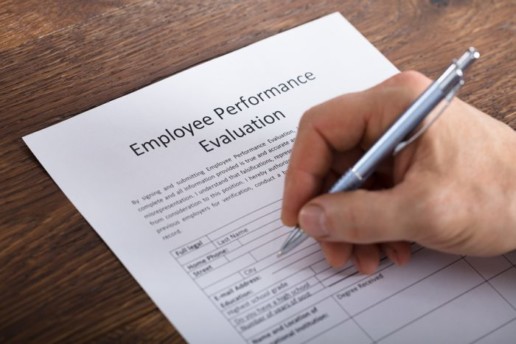5 great, underutilized places to promote your recruitment content
Are you promoting your recruitment content? Read this blog post to learn about 5 underutilized places you can promote your recruitment materials.
All your time and effort invested in brainstorming great recruitment content ideas and creating interesting and useful recruitment content for every step of a candidate's journey will be wasted if you don’t promote it.
Many HR professionals publish their recruitment content on their company’s career sites and job posting sites.
They also share it on social media. They know that if they want to be successful at promoting their employer's brand on social media, they have to learn all the tricks of recruiting on Facebook and create an outstanding LinkedIn Company Page.
However, there are many other places where you can promote your recruitment content to maximize its reach and achieve better ROI.
5 great, underutilized places to promote your recruitment content
Here is the list of the 5 best underutilized places where you can promote your recruitment content for free:
1. Your employees’ social media profiles
Asking your employees to share your recruitment content on their personal social media profiles is one of the most effective tactics for promoting your recruitment content. Recruitment content shared by employees receives 8 times more engagement than content shared by companies.
2. Online forums
Online forums are very effective, but often overlooked place to promote your recruitment content on. You can choose between numerous different forums, from general ones to those dedicated to special industry areas or any other topics.
3. Blogs
Blogs are another relatively underutilized place where companies can promote their recruitment content. Do a little research to find out which blogs your candidate persona regularly follow and offer to write a guest blog post.
4. University websites
If you’re looking to attract top young talent, then university websites are your go-to places for promoting your recruitment content. Many universities and colleges offer an opportunity for employers to advertise their recruitment content completely free of charge.
5. Company review sites
Online company review sites (such as Glassdoor and Great place to work) are a perfect place to promote your recruitment content and enhance your employer brand. According to Glassdoor, 54% of online job seekers read company reviews from employees.
Martic, K. ( 30 July 2018) "5 great, underutilized places to promote your recruitment content" (Web Blog Post). Retrieved from https://hrtechweekly.com/2018/07/30/5-great-underutilized-places-to-promote-your-recruitment-content/
3 questions to ask about paid leave programs
Paid time off policies are offered by employers for numerous reasons, employee wellness being one of them. Continue reading to learn about the 3 key questions to ask about these programs and their costs.
Employers provide paid time away from work policies for a variety of reasons: to attract and retain talent (responding to employee needs and changing demographics); to be compliant with local, state and federal laws (which are proliferating); and to support general employee well-being (recognizing that time away from work improves productivity and engagement).
While offering paid absence policies delivers value to both employees and the employers, employers recognize the need to balance the amount of available time with the organization’s ability to deliver its products and services.
To help employers balance paid time away drivers, here are three key questions to ask to get a handle on the costs and benefits of paid leave.
1. Do you have a complete picture of the costs associated with your employees’ time away from work?
A challenge for many employers is getting a handle on the cost of time away from work and the related benefits. If an employer cannot quantify the costs of absence, it may not be able to define management strategies or to engage leadership to adopt new initiatives, policies or practices related to paid and unpaid time away programs.
Ninety percent of employers participating in the 2017 Aon Absence Pulse Survey reported they hadn’t yet quantified the cost of absence, and 43 percent of participants identified defining the cost of absence as a top challenge and priority. Though intuitively managers and executives recognize there is an impact when employees are absent from work, particularly when an absence is unscheduled, they struggle to develop concrete and focused strategies to address absence utilization without the ability to measure the current cost and collectively the impact of new management initiatives.
Employers struggle to quantify the cost of absence in the context of productivity loss, including replacement worker costs. According to the Bureau of Labor Statistics in 2017, employers’ cost of productivity loss associated with absenteeism was $225.8 billion, and 9.6 percent of compensation was spent on lost time benefits and overtime.
Employers are expanding their view of absence, recognizing that use of paid and unpaid time away programs are often associated with an employee’s health. As a result, combining data across health and absence programs allows an employer to recognize drivers of absence “work-related value” and define strategies to address not just how to manage the absence benefit, but to target engagement to improve well-being and the organization’s bottom-line.
As an example, musculoskeletal conditions are frequently associated with absence, which is not surprising when 11 percent of the workforce has back pain. It is noteworthy that of those with back pain, 34 percent are obese, 26 percent are hypertensive and 14 percent have mood disorders. The Integrated Benefits Institute reported in 2017 that back pain adds 2.5 days and $688 in wages to absence associated with this condition. It is this type of information pairing that provides employers with the insight to develop strategies to address comprehensive absence.
When absence and health costs are quantified, organizations quickly recognize the impact on the business’s bottom line. As the old saying goes, “we can only manage what we can measure.”
2. What is your talent strategy to improve work-life benefits, inclusive of time off to care for family?
The race for talent is on, and every industry recognizes the huge impact the changing workforce demographics currently has, and will continue to have. The current workforce incorporates five generations, though an Ernst and Young report from 2017 estimates that by 2025 millennials will make up 75 percent of the workforce. As a result, the work-life needs of millennials—and their perspectives around benefits—is driving change, including time away from work policies.
It is worth noting that, per a 2015 Ernst and Young survey, millennial households are two times more likely to have both spouses working. The Pew Research Center reported in 2013 that, among all workers, 47 percent of adults who have a parent 65 years or older are raising a minor child or supporting a grown child. Additionally, a 2016 report from the Center for Work Life Law at the University of California Hastings claimed that 50 percent of all employees expect to provide elder care in the next five years.
In response, employers are expanding paid time off programs for care of family members. The paid family leave continuum often begins with a paid parental policy providing time to bond with a new birth or adoption placement. An elder care policy may follow, and the culmination might be a family care policy covering events like those under the job-protected Family Medical Leave Act. An Aon SpecSelect Survey reported that 94 percent of employers offer some form of paid parental leave in 2017; this is a significant change from 2016 when 62 percent offered this benefit. Two weeks of 100 percent paid parental leave was the norm per Aon’s SpecSelect 2016 Survey, but we are finding that many employers are expanding these programs, offering between 4 to 12 weeks.
Offering paid leave programs on their own may meet immediate needs for both time and financial support, but may be incomplete to help the employee address the full spectrum of issues that could affect success at work. In combination with family care needs—even those associated with a happy event such as a birth—there may be other health, social or financial issues. Employers combining their paid leave programs with a broader well-being strategy deliver greater value, improve engagement and increase productivity.
3. If you’re a multi-state employer, how are you ensuring your sick and family leave policies are compliant across all relevant jurisdictions?
Paid leave is a hot legislative topic lately. Last December saw the enactment of a paid FMLA tax credit pilot program as part of the federal Tax Reform The paid sick leave law club now totals 42 states and myriad municipalities. Both Washington state and Washington, D.C. are ramping up to implement paid family leave laws in 2020, joining the four states and one city that already have some form of paid family or parental leave law.
How are multi-state employers keeping up with this high-stakes evolving environment? The 2017 Pulse Survey saw 70 percent of employers report they are aware they have an employee who is subject to a paid sick leave law. Ten percent of respondents said they did not know if they had anyone subject to such a law. If knowledge is the first step in the process of compliance, deciding on a compliance strategy and then successfully implementing it are surely steps two and three.
With respect to paid sick leave, there are three major compliance options: comply on a jurisdiction-by-jurisdiction level, with as many as 42 different designs and no design more generous than it has to be; comply on a national level with one, most generous design, or meet somewhere in the middle, perhaps with one design for each state where a state- or local-level law is in place, or by grouping jurisdictions with similar designs together to strike a balance between being overly generous and being bogged down by dozens of administrative schemes.
Data analytics can be a key driver in designing a successful compliance strategy—compare your employee census to locations with paid sick leave laws. The ability to track and report on available leave is a requirement in all jurisdictions, and at this point, few if any third-party vendors are administering multi-state paid sick leave.
For paid family leave, the primary policy design issue is how an employer’s FMLA, maternity leave and short-term disability benefits will interact with the various paid family leave laws. So, while there may be fewer employer choices to be made with statutory paid family leave, clear employee communications will be critical to success.
Employers may tackle time away from work program issues individually to meet an immediate need, or collectively as a comprehensive strategy. Such a strategy would include data analytics across health and lost-time programs, absence policies that meet today’s needs for the employer and employee, health and wellness programs targeting modifiable health behaviors, and absence program administration that is aligned to operational goals. The expected outcome for time away from work programs isn’t about the programs themselves: it is about an engaged, productive workforce who delivers superior products/services. How do your programs stack up?
SOURCE:
VanderWerf, S and Arnedt, R (13 July 2018) "3 questions to ask about paid leave programs" [Web Blog Post]. Retrieved from https://www.benefitspro.com/2018/07/05/3-questions-to-ask-about-paid-leave-programs/
Wanted: Female financial advisors to shrink industry gender gap
Recent studies show that just 16 percent of all financial advisors are women, creating a substantial gender gap. Do you want to close the gap?
If you want more female financial advisors, leverage the ones you already have.
That’s among the findings of the J.D. Power 2018 U.S. Financial Advisor Satisfaction Study, which says that despite the fact that women control 51 percent of assets, just 16 percent of all financial advisors are women.
That kind of a gender gap is nothing to be proud of, especially since it also finds that female financial advisors are generally more satisfied and loyal to their firm than their male counterparts.
That said, female advisors have “some unique pain points” that firms looking to better their position in the industry would be wise to correct.
“The wealth management industry clearly recognizes that aligning the gender mix of advisors with the shifting demographics of investors is critical for their success,” Mike Foy, director of the wealth management practice at J.D. Power, says in a statement. Foy adds, “But firms that want to be leaders in attracting and retaining top female talent need to differentiate on recognizing and addressing those areas that women’s perceptions and priorities may differ from men’s.”
The study, which measures satisfaction among both employee advisors and independent advisors, bases its evaluation on seven factors: client support; compensation; firm leadership; operational support; problem resolution; professional development; and technology support.
Considering that even though overall satisfaction with firms is improving, women are “more satisfied and loyal, bigger brand advocates.” The study finds that female advisors’ average overall satisfaction score is 786 among employee advisors—an impressive 59 points higher than among their male counterparts. Among independent advisors, overall satisfaction among women is also higher, at 793, topping their male counterparts by 39 points.
In addition, female advisors also are more likely than male advisors to say they “definitely will” remain at the same firm over the next 1–2 years (68 percent, compared with 56 percent) and are more likely to say they “definitely will” recommend their firm to others (60 percent, compared with 50 percent).
But as far as female advisors are concerned, their firms fall short in a number of areas. Women are significantly more likely than men, the report finds, to say they do not have an appropriate work/life balance (30 percent, compared with 22 percent). And 90 percent of women who do have that balance say they “definitely will” recommend their firm, while only 68 percent of those who do not will do so.
Women are also less likely than men to say they “completely” understand their compensation (60 percent, compared with 66 percent) and less likely to believe it reflects their job performance (60 percent, compared with 68 percent). They’re also less likely than men to believe mentoring programs are effective (44 percent, compared with 53 percent).
The mean tenure for female advisors at their current firms, the study reports, is 18 years, while the mean tenure for male advisors at their current firms is 20 years.
SOURCE:
Satter, M (13 July 2018) "Wanted: Female financial advisors to shrink industry gender gap" [Web Blog Post]. Retrieved from https://www.benefitspro.com/2018/07/12/wanted-female-financial-advisors-to-shrink-industr/
4 actions HR departments should take to prepare for GDPR
In this article from Benefits Pro, we are going to take a look at the top four actions HR departments should take to prepare for GDPR. Continue reading:
A few years ago, Mark Cuban famously advised that data is the new gold. However, things have changed since the Cambridge Analytica and Facebook scandal as the public has become increasingly concerned with how companies are using their personal information.
As businesses prepare for the arrival of the General Data Protection Regulation (GDPR), leaders could be forgiven for thinking that data can become more of a liability than an asset – depending on its handling.
GDPR is a much-needed update to data protection that aims to strengthen and unify security for everyone in Europe. The legislation goes live on May 25, 2018 and will enforce all businesses to secure and manage the personal data of all individuals living within the European Union.
After years of gathering data, we are now entering a new era where trust and transparency are the new global currency. GDPR will affect all businesses that store any aspect of personally identifiable information of all individuals, both customer and employee, living in the EU, whether or not that business has an office there.
The scope of GDPR includes employee data, so it directly affects HR departments. As a result, companies need to update processes around the lifecycle of basic employee personal data such as health information and family details.There are many resources surrounding the topic; some on which include free, user-friendly materials published by the EU governments in addition to those that act as “scaremongers” seeking to try to trick companies into paying for compliance help. What makes it most difficult for HR professionals is interpreting the rule, which was written broadly to address any type of personal data and applying it to employee data and HR practices, specifically. Compliance cannot be achieved overnight or ready for the big “go live” in May either. An entirely new way of working to understand where every aspect of data is obtained, how it is used, and where it is stored needs to be put in place. In short, this is not a job for the IT department alone, but rather requires a highly collaborative effort across the company. Silos will need to be broken down to efficiently unify all departments such as sales, marketing, finance, IT, and legal to understand the scale of how much data businesses are actively storing. But what do HR professionals need to know?
1. Create new or updated privacy policies
New privacy policies likely need to be created and implemented to reflect the new rights of employees. Equally, all existing policies should to be reviewed to determine which ones require updating to fall in line with GDPR’s transparency and accountability requirements.
In addition, a key difference between the current EU data rules and the GDPR is the emphasis on individual rights. Employees can now request that their data be completely erased at any time or request a copy of their data thats on file. HR teams need to be prepared to uphold these demands.
2. Revisit outdated processes
Reviewing HR processes, like onboarding a new employee, will help reveal what data you’re collecting that you don’t necessarily have a need for. Minimization is key to successful GDPR compliance; less is more. Implementing minimization will likely require you to update protocols and rethink processes that include the requesting of personal data from employees. For example, the onboarding and transfer of employees will need to be revisited to ensure that data collection practices meet GDPR requirements. You may also need to revisit your record retention policies and processes for ex-employees.
Ask your partners and vendors for their GDPR and compliance plan as risk is shared when they handle employee data on your behalf…
3. Allow data access only to those who really need it
The rise of shadow IT and sensitive data being increasingly stored in the public cloud combined with malware in cloud SaaS applications are the more significant concerns. CIOs and IT leaders now have the power to implement stronger cybersecurity and secure data-management policies that will protect personal data now and in the future. Security elements of the legislation demand that appropriate technical and organizational measures are taken to ensure all employee data is kept safe. HR’s responsibility is to ensure that only those who need access to personal data to do their job have access to it. Making sure that the right people have the appropriate access levels within a digital HR platform – or keys to the file cabinet – is the secret to successful compliance.
4. Centralize your employee file management
Learning about and documenting every element of employee data, where it is stored, and who has access is a process made much easier with centralized digital files. Going forward, a digital system makes it possible for HR to implement and internally audit procedures that will ultimately provide them with the visibility into compliance as well as potential vulnerabilities. GDPR and employee expectations means companies need to shift from a reactive to a proactive approach. A digital system is necessary to enable HR with visibility across their data, securely manage access to the data and implement at scale and policy changes.. With GDPR, the stakes are increasing yet again for companies; HR now must think about collecting the least amount of data they need to get the job done and being completely transparent around its usage, rather than burying this information in complicated terms and conditions. Sure, this will dramatically change the way companies globally deal with EU citizens’ data, but it’s something to be embraced rather than feared. By showcasing implementation of these new data protection practices, a brand can actually build its reputation. While board members might fear the ramifications of the GDPR, we all know that the breach of company data is something far worse. For these reasons alone, GDPR should be seen as an opportunity for every employee to focus on protecting their personal data or at least understanding their responsibilities. And for employers, take this opportunity to become more open to a review of outdated practices and investing in and building technology that can complement this forward thinking approach. Data protection compliance is now an on-going priority and its beneficial for all to take seriously.
Source:
Gouchan A. (4 May 2018). "4 actions HR departments should take to prepare for GDPR" [web blog post]. Retrieved from address https://bit.ly/2wl6ZwU
The Cadillac Creep Will Impact Your Econo-Health Plan
How will the Cadillac tax affect you in the near future? From SHRM, get the details in this article.
As an HR Professional in 2010, I recall thinking, as I struggled to wrap my mind around the myriad of complex provisions included in the ACA, that the Cadillac tax was probably one provision that I didn’t need to concern myself with. After all, it was years in the future and only applied to those other, richer plans, right? Time for a fast forward reality-check.
The Cadillac tax has been delayed in the past but is set to begin in 2022 on high-cost employer-sponsored health coverage. It will tax health coverage that exceeds $10,200 for individual coverage and $27,500 for family coverage at the rate of 40%. This includes contributions made by employers and employees toward health coverage premiums but not cost-sharing amounts such as deductibles, coinsurance or co-payments made when care is delivered.
But, employers, like mine, have certainly not been idle during the last eight years. We have continued to work to design health care plans that will attract and retain top talent while ensuring that coverage meets minimum value and affordability requirements mandated by the ACA. All the while, health care costs, particularly driven by prescription drug costs, continue to climb. Studies suggest that prescription drugs will continue to represent a larger portion of the overall health spending. I have seen this firsthand with the employer-sponsored plans I manage where prescription drug costs may represent over 30% of total health claims spent.
This leaves employers with some tough decisions to either reduce the benefits they offer to maintain a cost-effective plan that still meets minimum coverage and affordability standards or absorb additional costs. And then, there’s the Cadillac creep. A monthly individual premium of $10,200 annually or $850 per month no longer seems far-fetched as I stare into a future where drug cost inflation rates outpace wage increases.
I’m a proud member of the Society for Human Resource Management (SHRM), which encourages Congress to fully repeal the excise tax. I support and join in SHRM’s advocacy efforts to defeat this tax because over 178 million Americans get their health care through employer-sponsored health plans. We can’t afford to let the Cadillac creep impact employers and employees.
This article was written by Crystal Frey of SHRM Blog on April 20th, 2018.
You May Want To Rethink Your 'Cultural Fit' Mentality, and Here's Why
Why achieving diversity in tech requires firing the industry’s ‘cultural fit’ mentality
If you have interviewed for a technology job, there’s a good chance the words “culture” and “fit” made an appearance during the phone-screen phase, or in early rounds of interviews. It is no longer enough for a candidate — especially early to mid-career — to arrive to job interviews with a stellar resume and relevant technical skills. They might also have to come with their best “I’m normal and will fit into the overall team culture of this company” outfit on. Over the past decade, the idea of hiring for “cultural fit” has become as important as, and at times superseded, hiring to fit a job description across forward-looking industries, from tech to transportation.
The nuance of this shift may be a cause for concern — especially for a global tech sector in search of a clear route to workforce diversity. Many of today’s tech human resources teams are tasked with recruiting a diverse group of people and retaining star employees. However, they still tend to supplement those pursuits with cultivating a unified office culture. While the industry has largely moved on from using ping pong tables as a recruiting tool, hiring people who pass the Beer Test — an applicant that hiring managers could work with in the office and hang with at happy hour — remains commonplace. Further, hiring based on a hiring manager’s own narrow set of requirements needed to fit their idea of a relatable person opens the door to all sorts of unconscious biases. Taking this recruiting shortcut also raises the bar for candidates from already under-represented groups, including minorities and women.
The main casualties: the pursuit of diversity and business bottom lines. It is true that research-backed conventional wisdom suggests happy workplaces are productive workplaces. What that line of thinking doesn’t account for is the fact that exclusively hiring talent for interpersonal compatibility can negatively impact the quality of work and focus of employees. In other words, employee camaraderie does not equal workplace compatibility. It definitely does not equal workforce diversity. And while a company may benefit from a general aspect of like-mindedness, there’s a great chance that the actual work is suffering due to the lack of diversity — both in people and ideas. Here in Toronto, hiring managers still focus heavily on likeability, which at times can be seen as more important than technical skills. My team and I recently began to see to potential impacts of “cultural fit” as we started to dive into the findings of our new report on the state of talent in Toronto’s emerging tech sector.
—techcrunch.com
Is Ergonomics A "Must-Have" For Your Workplace Wellness Plan?
Workplace wellness in most organizations centres around health promotion activity or policy development to support healthy behaviour and improve health outcomes in the workplace. A "workplace wellness" Google search reveals a range of programs focused on fitness, weight management, smoking cessation, stress management, work-life balance and occasionally flexible work scheduling. These are legitimately important aspects targeted at improving specific health outcomes.
It is important to realize that the average office worker spends over 65 per cent of their time at work in a sedentary seated position. No doubt you have seen the media campaigns touting the health concerns related to sedentary behaviour, some going as far as labelling sitting as the new smoking. Prolonged sitting has been associated with cardiovascular problems, increases in musculoskeletal discomfort, and decreases in concentration and productivity. Improper sitting and work station setup has been associated with an increase in musculoskeletal pain and injury (MSI) in the neck, shoulders, arms, wrists, legs and lower back. MSI are associated with the wear and tear on the muscles, tissues, ligaments and joints of the body.
It is for these reasons that office ergonomics should be on the workplace wellness program menu. Ergonomics is the science of matching the work to the worker. In an office environment, a major focus would be insuring that employee workstations fit the worker – not the employee made to fit the workstation. To design a healthy employee work station properly requires an understanding of the limitations of the human body, especially in terms of muscle and soft tissue fatigue. Again, a Google search on "office ergonomics" leads you to resources on the proper configuration of computer workstations to promote a neutral sitting posture aimed at reducing muscle and soft tissue pain.
This is a great place to start, but does not replace the knowledge of an experienced ergonomist to ensure that individual limitations and pre-existing health conditions are accommodated for properly. Here are some examples of the most common office ergonomic challenges I encounter when consulting with organizations. The first is the desk. The working height of a standard desk is 30 inches, for which we expect it be comfortable for both the 5-foot-2-inch and a 6-foot-2-inch employee. But the reality is that this standard desk height is appropriate for the 6-foot-2-inch employee. The average female is 5-foot-4-inches, which would suggest that the standard 30-inch working height is too high for the majority of female workers in the office. When the working height is too high, the employee will adopt a posture where the wrists are extended when keyboarding, the neck is extended, shoulders are hunched and back is flexed forward off the chair.
—theglobeandmail.com
6 Steps to a More Effective Performance Management Program
Traditional methods of managing performance aren’t working anymore. Companies are moving away from traditional performance management tools, like annual reviews, to new techniques that emphasize real-time feedback. You know the drill: managers and employees sit down once a year to review performance. These performance reviews assess an employee’s performance on a scale, or give it a numerical rating. And then, in some cases, employees are given a ranking compared to other employees.
A performance system used in figure skating or competitive cooking shows may not be the best way of evaluating employees in the workplace. When it comes to the traditional performance review process, consider: Traditional performance management approaches aren’t effective because they weren’t designed for the current workforce. Today, with a tight labor supply and the nature of work very different from the industrial past, organizations must focus on developing people, rather than rating them. This requires a shift to performance development. Here’s how you as an HR professional can help your management team create a thoughtful performance development plan.
This is important for two reasons: to make the case to management that there is room for improvement in your current performance management system and, later, to provide baseline metrics to which you can compare your system after the shift to performance development. Your audit should ask the following questions: As part of your evaluation, also assess current organizational performance. A shift to performance development will see organizational performance metrics improve, and you want to be able to quantify this improvement.
Let your senior management team know that performance management may no longer be meeting your company’s needs. Two-thirds of companies are shifting from traditional performance management to an emphasis on developing talent and providing continuous feedback. Then present the results of your audit to senior management. What are the areas that need to be improved? Provide examples of how performance development will help improve these areas. For instance, if your employees rarely receive feedback outside of their annual performance review, show how alternatives to the review, such as consistent coaching or monthly or weekly , can provide your employees with regular feedback.
—tlnt.com
Competing for talent in a Gen Z world
As 2018 progresses, HR managers are well advised to start stepping out of their comfort zones. Because Generation Z is beginning to surge into the workplace, forcing the reinvention of everything from benefits to recruiting. Your relevance in the war for talent may hang in the balance.
You’ve been hearing for some time now about the challenge of engaging a multi-generational workforce. But it’s time to think beyond the Millennials, and take a good look at the Gen Zs (born after 1995). They have a whole new set of expectations and values that are forcing employers to re-evaluate how they recruit, retain and, especially, engage their people. Start working on your battle plan in 2018 (and beyond) to avoid losing the talent battles.
They have decided views on how they expect to be treated and managed and how they respond if they don’t think their employer is measuring up. It’s a function of their upbringing in a hyper-connected world. According to Pew Research, only 14 percent of U.S. adults had Internet access in 1995, but that exploded to 87 percent by 2014. Small wonder that for the Zs, it’s the always-on and available tech-enabled connections to networks of people and information that rule. It’s how Zs learn and solve problems and it influences their expectations.
Here’s what it all means for your workplace and how you will need to compete for talent moving forward.
Legacy benefits and old attitudes need replacing now
The Zs aren’t merely connected. They share aggressively. Studies show that if their experiences – with a brand or a product or an employer – are negative, this generation will happily tell everybody about it online, including on Glass Door, a fast growing site that reviews millions of employers. That makes it important to foster a positive culture and work environment, and provide the types of benefits that will attract the Zs, keep them happy and ideally inspire them to spread the word.
To that end, take a long, hard look at your employee benefits: Too many employers still offer legacy employee packages that have changed little in the last two decades. Will they be good enough to woo the Zs and keep them satisfied? In fact, the Zs are motivated by the total deal, not just financial compensation. They want unique benefits that are personalized for them right down to the individual level.
Think about the 22-year-old who’s working in an urban setting, maybe with a pet at home, doesn’t have a lot of time to shop and is saddled with student loans. What are the priorities? A plan offering vision, life or disability insurance? Or a benefits package that provides a personal concierge and maybe dog walker, student loan repayment and an identity theft program, too? Best-of-class employers will offer up a robust mix of traditional and non-traditional benefits that cater to the individual employee’s lifestyle needs.
VR and gamification: Critical tools in winning Gen Z talent
Even as the Zs mature, there’s a trend toward a blending of personal and work lives as outside influences bleed into the workplace. When it comes to virtual reality, this generation of digital natives is enthusiastic over its potential use in the workplace.
There’s been a 250 percent jump in VR companies since 2012 and the technology’s significance is for more than just promoting productivity by connecting people in different locations for virtual meetings. It’s also a good recruiting tool, a way of letting prospective hires “experience” your environment so they are better able to tell before they take a job if it’s right for them.
Gamification is another Z activity that’s bleeding into business and affecting recruitment and hiring. Picture Silicon Valley’s “code-offs,” where prospective developers compete during a set time period to find the best solution to a specific design challenge. The winner gets the job. It certainly makes resume screening seem obsolete by comparison.
This incoming generation has a lot to offer employers who value the kind of fresh perspective it represents. The next big challenge will be reflecting that appreciation in creative approaches to winning and keeping their hearts and minds.
Read the article.
Source:
Barone M. (1 March 2018). "Competing for talent in a Gen Z world" [Web Blog Post]. Retrieved from address https://www.benefitspro.com/2018/03/01/surge-of-gen-z-workers-changing-how-employers-comp/
6 Steps to a More Effective Performance Management Program
A performance system used in figure skating or competitive cooking shows may not be the best way of evaluating employees in the workplace. When it comes to the traditional performance review process, consider: Traditional performance management approaches aren’t effective because they weren’t designed for the current workforce. Today, with a tight labor supply and the nature of work very different from the industrial past, organizations must focus on developing people, rather than rating them. This requires a shift to performance development. Here’s how you as an HR professional can help your management team create a thoughtful performance development plan.
This is important for two reasons: to make the case to management that there is room for improvement in your current performance management system and, later, to provide baseline metrics to which you can compare your system after the shift to performance development. Your audit should ask the following questions: As part of your evaluation, also assess current organizational performance. A shift to performance development will see organizational performance metrics improve, and you want to be able to quantify this improvement.
Let your senior management team know that performance management may no longer be meeting your company’s needs. Two-thirds of companies are shifting from traditional performance management to an emphasis on developing talent and providing continuous feedback. Then present the results of your audit to senior management. What are the areas that need to be improved? Provide examples of how performance development will help improve these areas. For instance, if your employees rarely receive feedback outside of their annual performance review, show how alternatives to the review, such as consistent coaching or monthly or weekly , can provide your employees with regular feedback.
—tlnt.com









/arc-anglerfish-tgam-prod-tgam.s3.amazonaws.com/public/OJL4S3EEANC5POE7WYOK5RSKHU.JPG)



